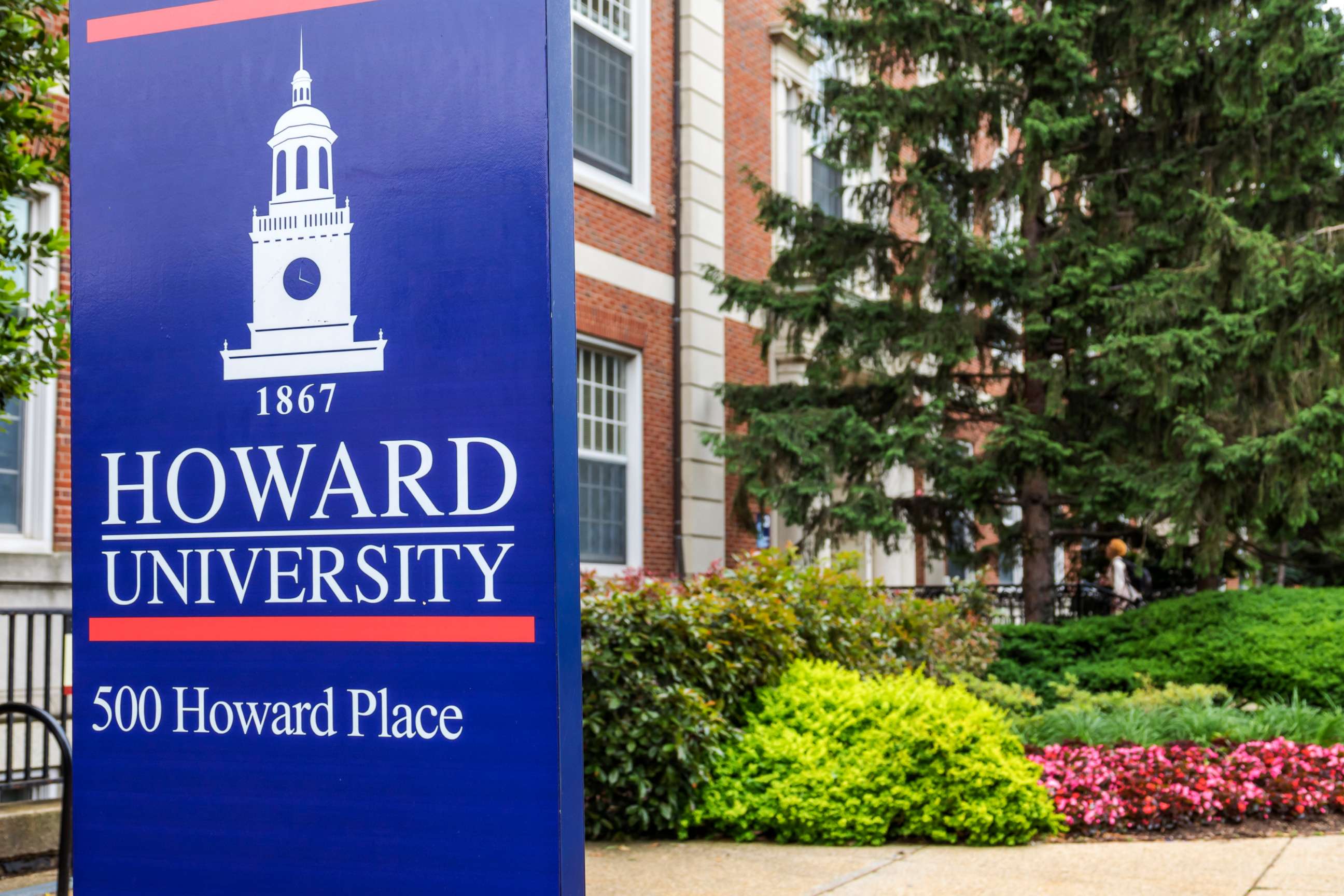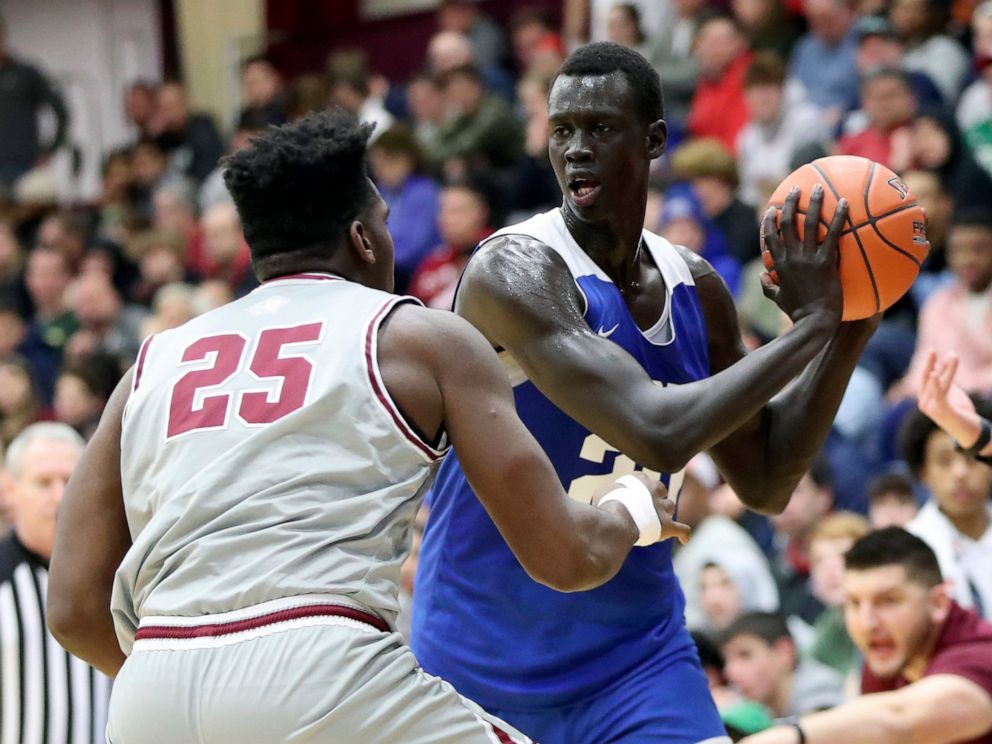HBCUs become more appealing for high-profile athletes
Historically Black colleges should be a top destination, experts say.
When five-star high school basketball recruit Makur Maker was weighing offers from top college programs last summer, he looked at traditional powerhouses like Kentucky and UCLA. But the school he ended up choosing to attend was Howard University in Washington, D.C.
Maker felt he could be successful at Howard, even though the Bison won just four games the year prior and had not appeared in the NCAA Tournament since the early 1990s. He said he wanted to attend a historically black college, and encouraged more top recruits to follow his lead and "make the HBCU movement real."
Historically black colleges and universities have a rich sports legacy and have produced plenty of star athletes despite their lower profiles. Basketball Hall of Famer Earl Monroe, Olympic runner Wilma Rudolph and Pro Football Hall of Famers Willie Lanier and Michael Strahan are a handful of high-profile athletes to come out of HBCUs.
"To go to Texas Southern ... it was perfect for me," Strahan, who was inducted to the Pro Football Hall of Fame in 2014 and now co-hosts "Good Morning America," told ABC News' "Perspective" podcast. "Knowing the history when you really looked into not just NFL players, but Hall of Fame NFL players, definitely made me realize that if I really wanted to be an NFL player that it could happen."
Lanier, a graduate of Morgan State University, also spoke with "Perspective," saying he was ignored by predominantly white schools when he was being recruited.
"It wasn't about talent, it was about race. It was about a decision that it was not going to integrate," Lanier said. "The institutions that were white were not recruiting Black students or athletes."
Despite their legacies, HBCUs have struggled to consistently attract the top athletes in America. Makur is the only ESPN five-star player to ever commit to an HBCU.

Derrick E. White, a professor of African American studies at the University of Kentucky and author of "Blood, Sweat, and Tears: Jake Gaither, Florida A&M, and the History of Black College Football," said that recruiting gap stems from decades of institutional inequality.
"What we see really in the late '60s and early '70s is desegregation," White said. "Black colleges ... did not have the kinds of resources to compete for the very best players. After 1984, what we see is a massive explosion of new television dollars entering into college sports and those television dollars are being thrown at primarily white institutions."
Tyrone Wheatley, the head football coach at Morgan State University, was a star running back at the University of Michigan and said student-athletes can feel lost at big programs.
"My first semester at University of Michigan, I didn't like it," Wheatley said. "Now, you're here [at Morgan State] and this is the first time ever in my professional career that I've ever felt comfortable doing a situation like Black Lives Matter. ... I don't have to explain if I want to take a knee ... or me supporting the young men who want to take a knee."
Wheatley, a first-round pick of the New York Giants in 1995, told "Perspective" that athletes who have ambitions of turning pro will get the necessary preparation at an HBCU.
"I have met some of the brightest and best coaches out there," he said. "At the end of the day, we have the essentials and everything you need to be successful at an HBCU."
Billy Hawkins, a professor at the University of Houston and author of "The New Plantation: Black Athletes, College Sports, and Predominantly White Institutions," said the next few years could become a time when more five-star recruits consider attending HBCUs:
"I think there is ... some racial fear when you talk about the radicalization, or the weaponization, of white supremacy," Hawkins said. "I think a lot of individuals in the Black community are concerned about where we send our children and want to make sure they're going to safe places."

What could make this moment a turning point? Strahan said athletes should consider the advice they receive before choosing their school.
"A lot of these athletes are told that if you don't go to one of the larger schools ... then you're not going to have a chance to make it to the next level," he said. "It's just not true. ... HBCUs provide you with what a great education, but they also provide you with a great opportunity to get to the pros."
Strahan added that alumni giving time or money to schools can also influence an athlete's decision. He has been involved with and given back to his alma mater, as has Lanier, who told "Perspective" he is working to install modern playing surfaces at HBCU football fields through his program, The Honey Bear Project.
As for Maker, Howard's prized recruit appeared in just two games before getting injured, and the Bison had to cancel their season due to a coronavirus outbreak.
Maker may enter the 2021 NBA draft and leave Howard. However, his decision to go to an HBCU could make other prospects consider the same route.
"That is legendary in so many different ways," Strahan said of Maker's decision. "If he can come out of there and still be successful, and I hate saying go to the NBA because there's more than one way to be successful, but ... I think it will add a lot of creed ... to the argument that HBCUs can be great for young athletes."
Listen to the full report and the rest of "Perspective" here.




